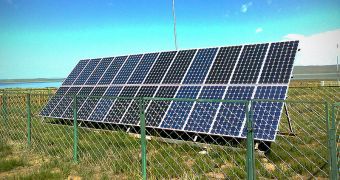The future seems to be bright and eco-friendly, according to experts from the International Energy Agency who think that up to one third of the global energy demand will be satisfied by clean green solar power by 2060.
This strategy would come as an effective response both to climate change phenomenon and fossil fuel shortages. In their opinion, solar photovoltaics along with solar hot water could represent earth-friendly alternatives, much more reliable and used on a global scale to power a significant list of devices, ThinkProgress reports.
The increased popularity has a simple explanation. According to IEA experts, most of the economic activities will “migrate” to sunnier regions around the equator by 2050.
This plan is expected to contribute to the development of solar power, as a viable source of clean energy with unlimited potential. Moreover, it seems that those areas will represent the home of up to 80% of the overall population.
Sunlight will become a trust-worthy resource, in times when living standards in India will become comparable with those currently displayed in the US, according to the same study.
Until 2035, experts forecast a slow evolution for renewables. They anticipate a rather modest growth, since solar power would only be able to offer up to 4.5% of the entire energy needed to supply the global energy grid.
The price of these installations seems to provide all the right answers both for developers and for clients. Carbon War Room CEO Jigar Shah thinks it would be possible for solar power to take over 5% of the US market within the next decade, if the costs continue to decrease. In his opinion, a shrinking price tag is correlated mostly with hardware and installation improvements.
IEA experts think that a carbon price could count as one of the most effective initiatives aiming to make the solar industry more competitive. They believe that this strategy has more potential than a plan focusing on long-term subsidies for alternative sources of power, since it could guarantee a 30% market penetration.

 14 DAY TRIAL //
14 DAY TRIAL //